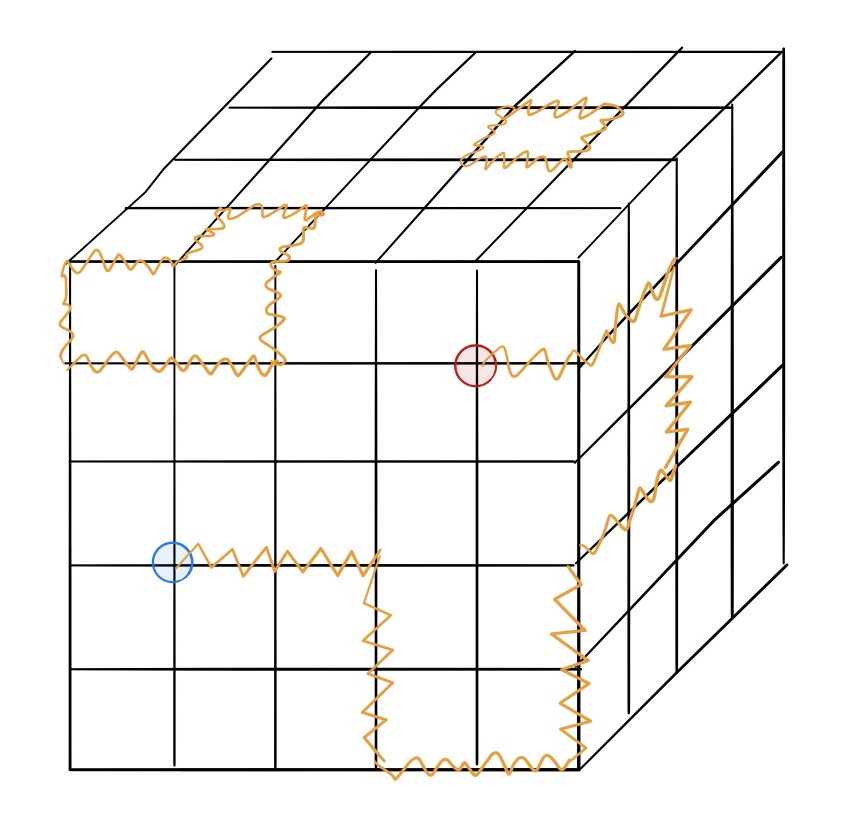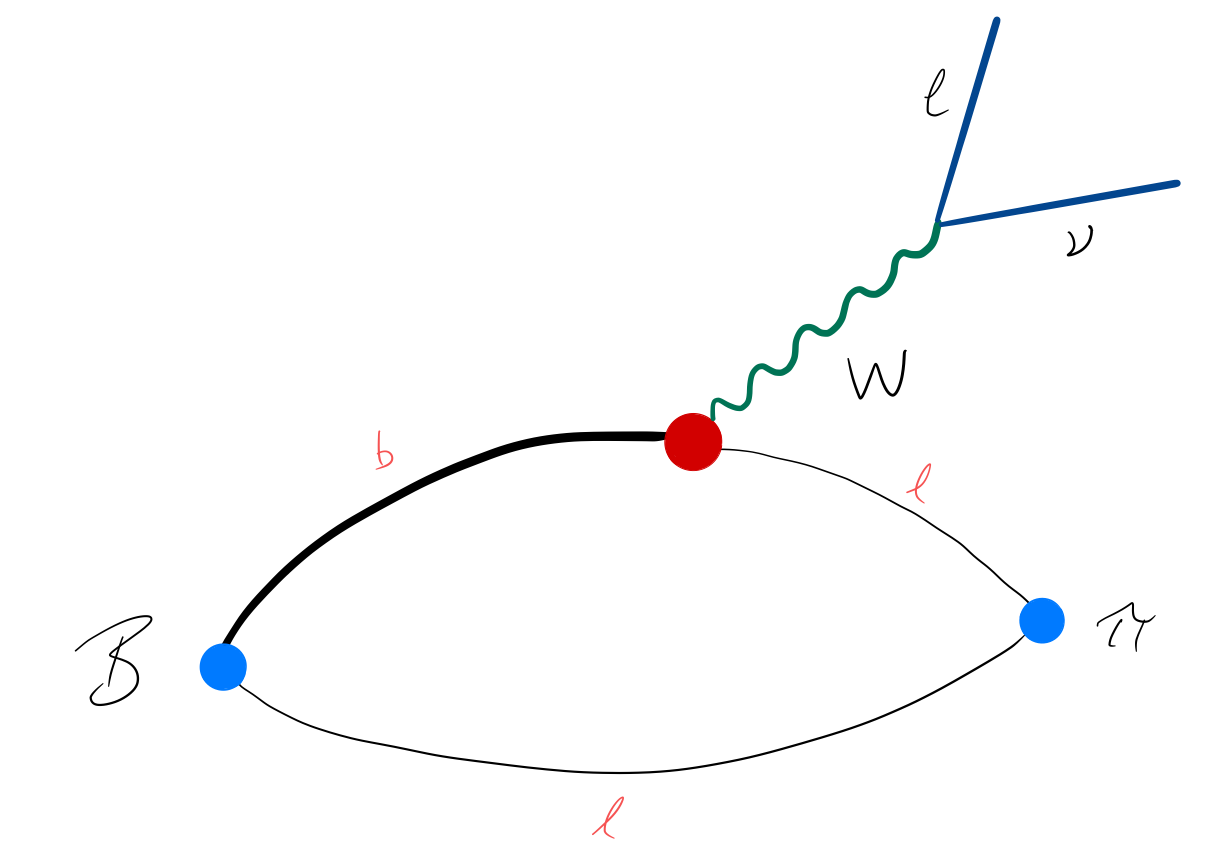Research Overview
You can find my publications at Inspire-HEP
My research is in theoretical particle physics where I study the universe at some of its smallest scales. Most often, I use the tools of lattice field theory to calculate properties of particles bound tightly together due to the strong force, described by a theory called Quantum Chromodynamics. More recently I have looked towards the large scale structure of the universe to better understand the particle nature of dark matter, of which we know very little.
Heavy Quarks
A common theme in my work is the presence of bottom quarks, which are heavy -- much more massive than up and down quarks, for example. These need special consideration when computed in lattice QCD. But they are exciting: particles that include bottom quarks could be where we find hints of new physics!
Semileptonic Decays
Objects composed of multiple quarks and antiquarks can decay via the weak force by emitting a W boson. This changes a quark of one flavour (our word for 'type') into another. My research involves calculating how likely it is that a bottom quark will decay into another lighter quark.
The image to the right depicts such a decay. In this case a B meson decays into a pion when the bottom quark decays to an up quark, by the emission of a W boson.
Tetraquarks
Hadrons are made of multiple quarks. We have long known you can get combinations of a single quark and a single anti-quark (we call these mesons), or three (anti-)quarks (we call these baryons), but work like ours and tentative experimental evidence strongly implies we should expect to find tetraquarks, which comprise two quarks and two anti-quarks.
Our current research suggests that we should expect the formation of tetraquarks where two of the quarks are much more massive than the remaining two. I have doodled this set-up, showing the presence of gluons. These are the particles that carry the force and hold everything together.
Dark Matter
Dark matter makes up the majority of the matter content of the universe, yet we don't fully understand what it is or how it behaves. We know it feels the gravitational force, but if it feels the other forces at all, the effects need to be miniscule. We call it dark matter because we cannot see any light from it. Please enjoy my doodle of a box containing dark matter on the right.




